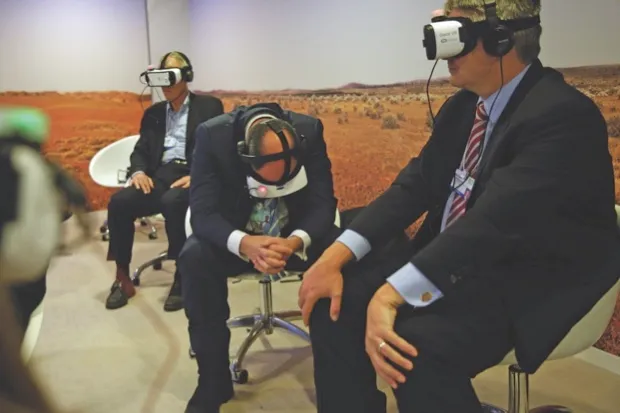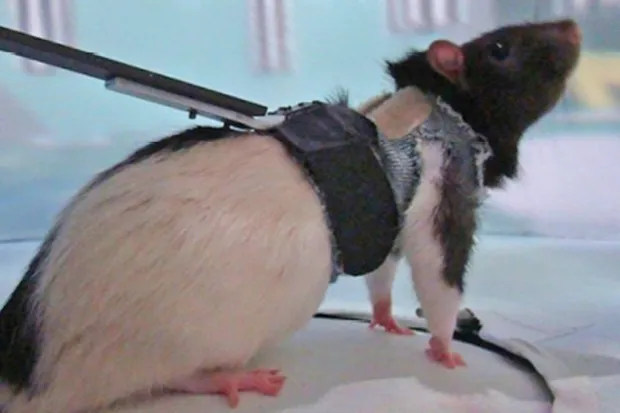2016 was dubbed ‘the year of VR’, and with good reason. While 2015 saw the budget Google Cardboard and Samsung Gearvirtual-reality headsetsenter the market, last year welcomed the big boys like Oculus Rift and HTC Vice, as well as Google entering the fray with the Daydream View.
Surely, then, the magical virtual future we werepromised in the 1990sis finally here? Perhaps. But although the latest technological developments are indeed providing the deepest and most impressive immersion in virtual worlds to date, the potential dangers inherent inVRare yet to be fully understood.
Overcoming cybersickness
Virtual-reality sickness (also known as cybersickness) is a side-effect experienced by some when using VR. Symptoms are similar to those of motion sickness, including nausea, disorientation, pallor, headaches, sweating and even vomiting. It’s widely thought that this is caused by a conflict taking place within the brain.

Your visual and auditory sensory inputs tell you that you’re moving through space, whereas your inner ear doesn’t detect the corresponding motion. Similarly to motion sickness, the ‘area postrema’ in the brain senses this conflict, assumes you’re hallucinating after accidentally ingesting a neurotoxin and tells your body toeject the offending substancepost-haste. This phenomenon is more likely to affect children between two and 12 years, which is why some VR unit manufacturers advise caution or even for their units to be used only by children of 13 and over.
Thankfully, many of these short-term side effects have been reduced by technological developments over the last few years and will continue to do so as time rolls by. Increased resolution and screen refresh rates have had a positive impact, as has game design itself, with developers gaining a deeper understanding of what makes a truly immersive and stable VR experience.
Rat reality
Research is, however, being carried out to uncover whether the impact VR has on the brain is more significant than the superficial symptoms of cybersickness. ProfessorMayank Mehtaand his colleagues at UCLA (University of California, Los Angeles) have been conducting experiments to explore the effects of VR on the brains of rats.

By building an environment in which the animals can explore a virtual space on treadmills, the team have been able to monitor activity in the hippocampus – an area of the brain important for spatial awareness, learning and memory. They found that around half the neurons that fire in a real-world environment simply shut down when in VR. Research is ongoing to what impact this may have on the brain, but it at least intimates that the industry and researchers are taking the issue of VR and physical and mental healthy seriously.
Social immobility
Truly understanding the long-term neurological impact of VR in humans will take time, but what of the social ramifications? We’ve already seen the dangers that immersive gaming can pose in the MMO world, with isolation and reclusive behaviour, depression, suicide and even virtual-world conflicts spilling over into real-world violence.

There was even the 2008 case of a Russian man dying after becoming embroiled in conflict resulting from the (virtual) death of one of the members of his game. A physical violent brawl ensued and the man died. Although such extremes tend to be rare, they do happen, and the introduction of VR into mainstream culture means that unexpected social problems will inevitably come to light.
Having spent a lot of time in VR ourselves, one of the most peculiar sensations isn’t being in the virtual world itself, but the act of removing the headset at the end of the session, which is followed by the dull thud as you return to a comparatively beige reality, devoid of the wonder and boundlessness of the synthetic. It’s all too easy to see how, as the technology advances with ever greater velocity, users young and old will become ever-more reluctant to return to reality. Imagine trying to get a teenager to do their homework when they’re busy in the cockpit of an X-Wing, taking down the Death Star single-handedly. You’ll need more than Jedi mind tricks for that one.
This escapism isn’t just limited to gaming. As with so many technological developments, much will be driven by the porn and sex industry. Teledildonic sex (remote sexual activity) is already bedding in, as products that allow partners many miles apart to control mechanical sex toys in real time are flying off the shelves. Combined with VR and social media, this opens up a whole new frontier of sexual exploration. That’s fair game for liberal, single individuals but what ethical rules apply if you have a partner and are having a virtual sexual encounter with a digital avatar? Perhaps it will simply be up to each and every individual, but it’ll only be a matter of time before such cases are raised in court.
Into the unknown
As is so often the case with new technology, there are many unknowns. Further studies into how VR impacts brain function are required to understand the potential pros and cons, while discourse on the social implications of the technology is equally important. Like most things in life there are potential risks but, used wisely, virtual reality will bring positive experiences to millions.

Even now, organisations like the charitySpecial Effect, who develop and supply video-game control systems for people with disabilities, are taking advantage of the latest technology. As founder Dr Mick Donegan suggests, these systems “could allow people with severe mobility challenges, even those who are completely paralysed, the opportunity to ‘move freely’ in both the real and virtual worlds”. And it’s through applications like this that VR will truly unlock its full potential, regardless of the possible downsides.
